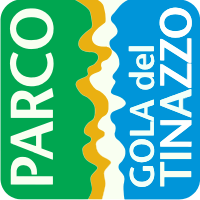PARK GEOLOGY
The land surrounding the park is steeped in geological history, dating back to the formation of the embedded walls and ancient bed and the formation of Castro.
Such rock, deposited back about 190 MA in a marine platform environment, looks chaotic and shows almost no sign of stratification. In more recent times, this same rock formation has been altered, as evidenced by the many traces of overlapping events, formative at first and then shaping due to the flow of rivers, karst development, and glacial actions.
The gorge rock has undergone a long erosion process that has resulted in a narrow and stunning opening where traces of the progressive lowering of the river bottom and the heady swirl of waters are very visible. On more than one level, one can see circular shapes called potholes, which are caused by erosion as the fast flowing water swirls, carrying fragments of stones and pebbles which grind down the rock to form the pothole structures.
The limestone rocks show signs of karst especially along fractures and faults, while the chemical deposition of calcium carbonate had created wide and interesting travertine formations along the walls.
Important water circuits end their flow near two sources located within the park limits. Over a period of time between 2 million and 10 thousand years ago, the glacial action worked on this portion of the territory. Outstanding ice thicknesses have occupied the gorge over time.
Finally, through the canyon of the Tinazzo, water carried the debris that deposited in the basin of the Borlezza when the water reached the lake, forming the delta on which the metallurgical factory was built.
ENERGY
The water of the Tinazzo has supplied, for centuries, the power needed to work the iron from the surrounding valleys and for which , both upstream and downstream of the gorge, many mills and forges were built.
Still, the gorge always was a permanent threat of devastation. During violent storms, waters would carry huge quantities of vegetation debris jamming the opening of the gorge entrance, creating a dam of logs able to increase the back stream surface level by 10 meters. When the dam would break, the effect was devastating: the force of water would enter the gorge with a deafening roar, unloading itself on the lake and the village of Castro.
One of the most disastrous floods was surely the one that happened just before 1535. The scholar Achille Mozzi, from Bergamo, wrote in 1590 “Vicus Oliveri Castri Memorabilis olim, Corruit, immensae turbine raptus aquae” (the village of Castro, once rich in olives groves and so fond of memories, was devastated by an immense water vortex).
But the flood on which Mozzi reminisces could have actually been another flood which happened in 1590, as many others were then remembered in 1692, in 1737, in 1820, in 1882 and in 1905.
It was probably right after the devastating flood at the end of 500 that the mighty wall of the embankment towards Castro was built, already visible in maps of 1626 and still visible today. The flood of 1784 seriously damaged the first attempt at transforming the economy through the industrial revolution, an economy which, for centuries, had craflty exploited the water of the gorge. The blast furnace which Ludovico Capoferri di Castro had built at the exit of the gorge was in fact razed to the ground.
The successors of Giovanni Andrea Gregorini, wishing to expand the industrial area and secure the plants from further destruction, were granted in 1915 the authorization to divert the course of the river Borlezza, which was made to flow through an artificial gallery near the Orrido di Castro.
Because of this, the final part of the gorge became silent and dry and the gorge itself transformed into a fossil as the original delta never again was fed by debris.
